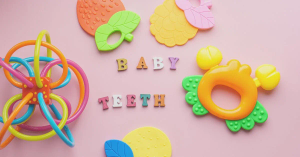Art is often seen as a fun extracurricular activity for children, but its impact goes far beyond mere enjoyment. Engaging in art plays a crucial role in a child’s development, affecting cognitive, emotional, and social growth. The importance of art in child development has been widely supported by research, with studies highlighting how creative expression contributes to overall well-being and academic success.
Cognitive Development Through Art
Art is a powerful tool for cognitive development. When children engage in artistic activities, they are not just learning about colors, shapes, and patterns; they are also developing critical thinking skills and problem-solving abilities.
- Spatial Intelligence: Art helps in the development of spatial intelligence, which is the ability to visualize and manipulate objects in a space. According to Howard Gardner's Theory of Multiple Intelligences, spatial intelligence is crucial for fields such as architecture, engineering, and even surgery.
- Memory and Attention: Creating art requires focus and concentration, which enhances memory and attention span. A study published in the Journal of Applied Developmental Psychology found that children who engage in regular art activities demonstrate better memory retention and cognitive processing.
Emotional and Social Benefits
Art is not only about cognitive development but also plays a significant role in emotional and social growth.
- Emotional Expression: Art provides children with a medium to express their emotions and experiences, particularly those they may not have the words to describe. This can be especially beneficial for children facing emotional challenges or trauma. Research published in Art Therapy: Journal of the American Art Therapy Association supports the idea that art can serve as a therapeutic tool, helping children to process and express complex emotions.
- Social Skills: Group art projects encourage collaboration and communication, teaching children how to work with others, share resources, and resolve conflicts. These activities help in developing empathy and understanding, essential components of social interaction.
Art in the Academic Context
Integrating art into the academic curriculum can lead to improved academic performance. Schools that emphasize art alongside traditional subjects often see higher levels of student engagement and better academic outcomes.
- Enhanced Learning: Art can make learning more engaging and memorable. For example, drawing diagrams or creating visual representations of concepts can help children better understand and retain information.
- Critical Thinking: Art encourages children to think critically and creatively, skills that are transferable to other academic areas. According to a report by the National Endowment for the Arts, students who participate in art programs are more likely to excel in reading, writing, and mathematics.
Fostering a Love for Art at Home
Parents can play a vital role in fostering their children’s love for art.
- Provide Materials: Ensure that your child has access to various art supplies, such as crayons, paints, clay, and paper.
- Create an Art Space: Designate a specific area in your home where your child can create freely without worrying about making a mess.
- Encourage Exploration: Allow your child to experiment with different art forms, from painting and drawing to sculpting and collage-making.
- Celebrate Art: Display your child’s artwork around the house, which can boost their confidence and encourage further creativity.
Conclusion
The role of art in child development is multifaceted, influencing cognitive, emotional, and social growth. By providing opportunities for artistic expression, parents and educators can help children develop important life skills that extend far beyond the art room. Encouraging art in childhood lays a foundation for a lifetime of creativity and critical thinking.








